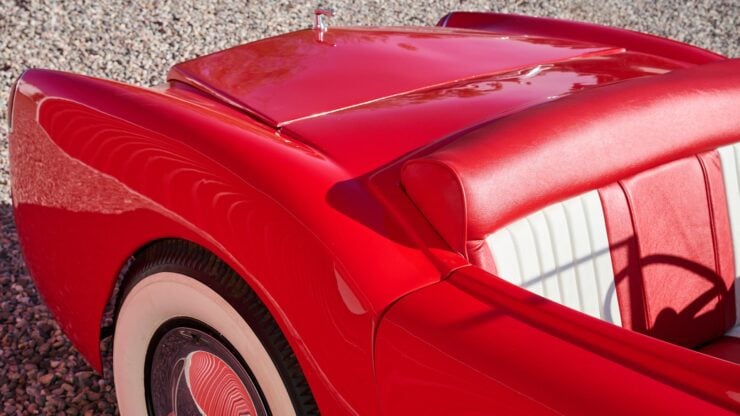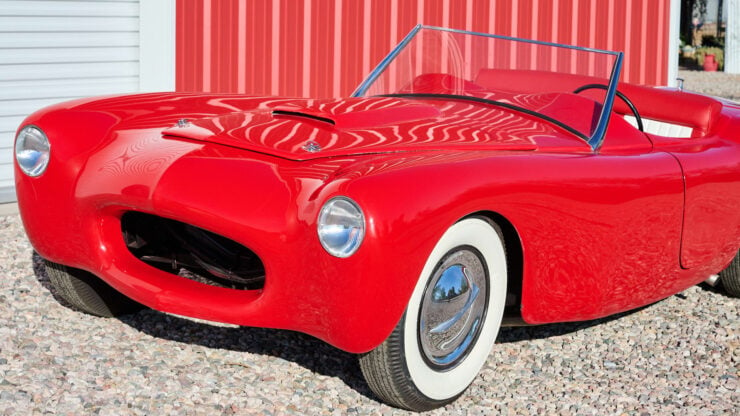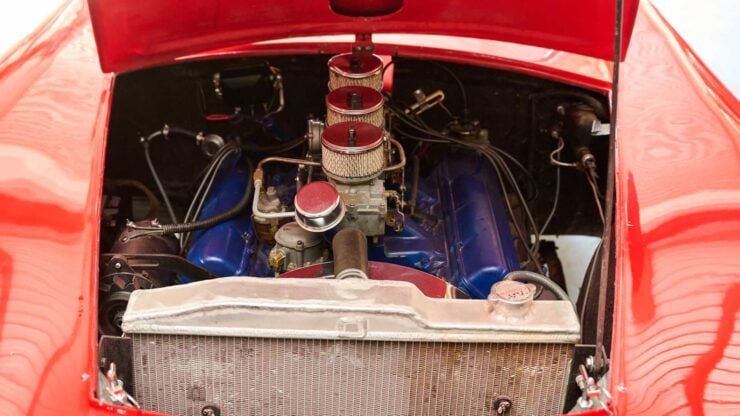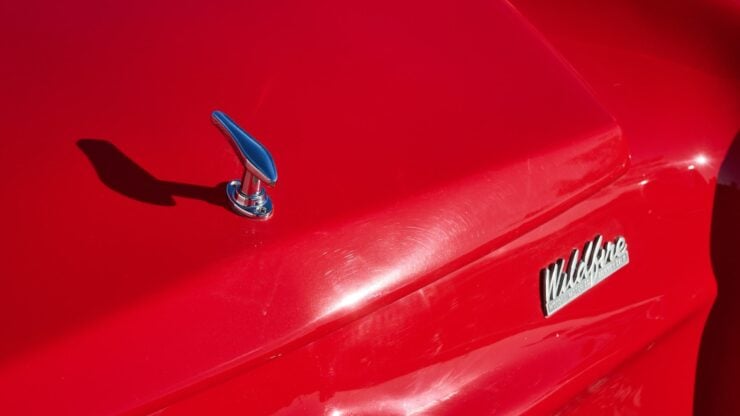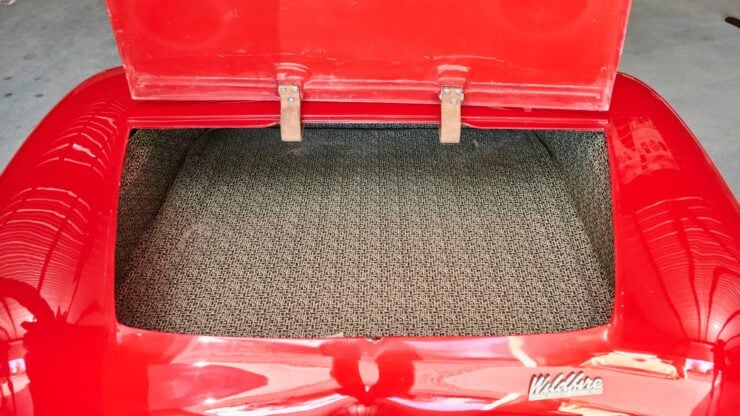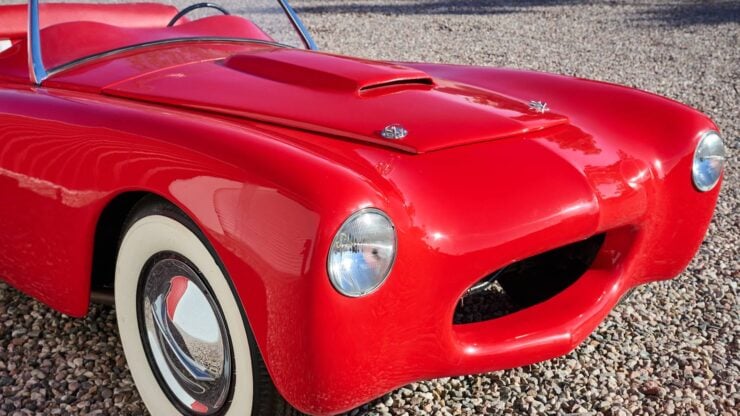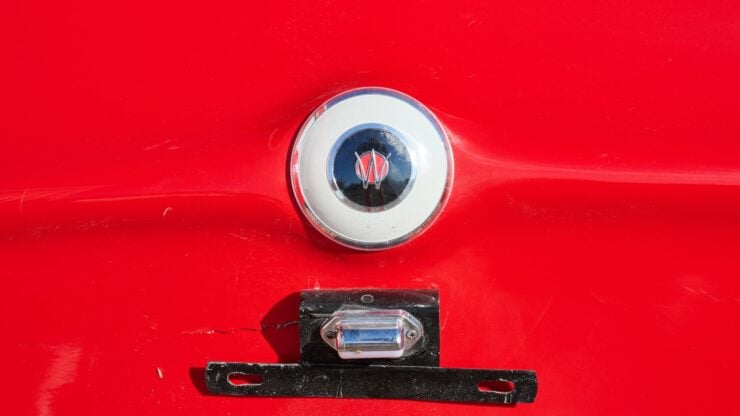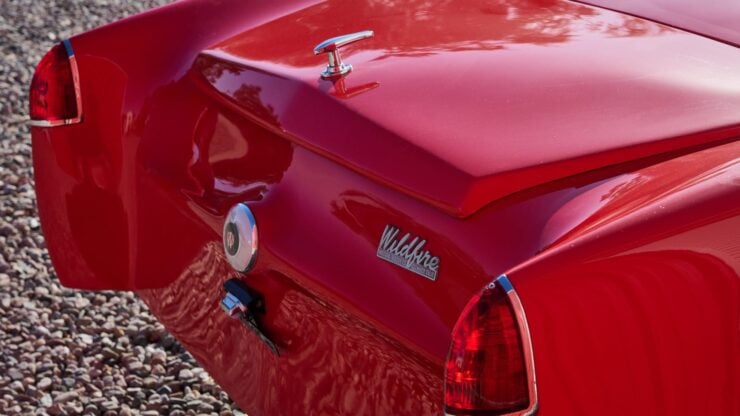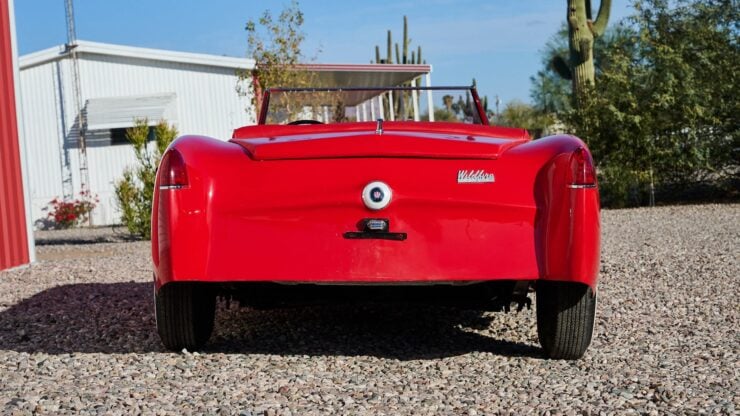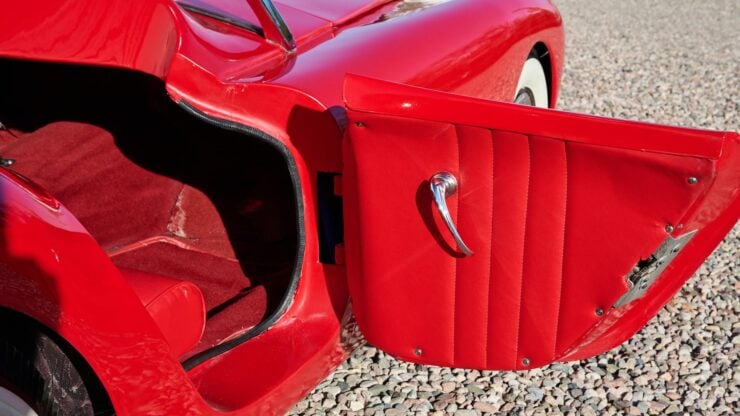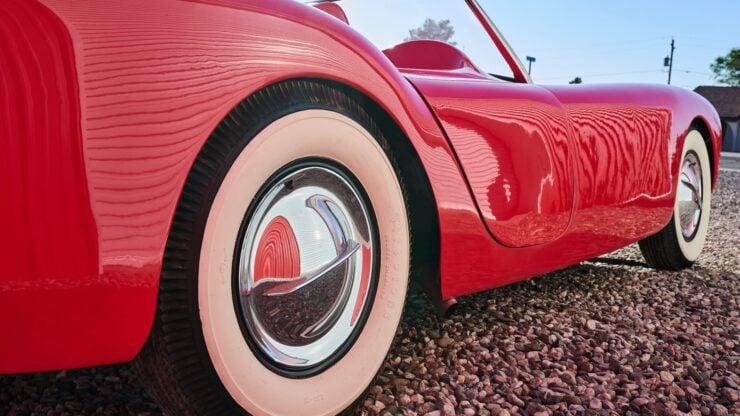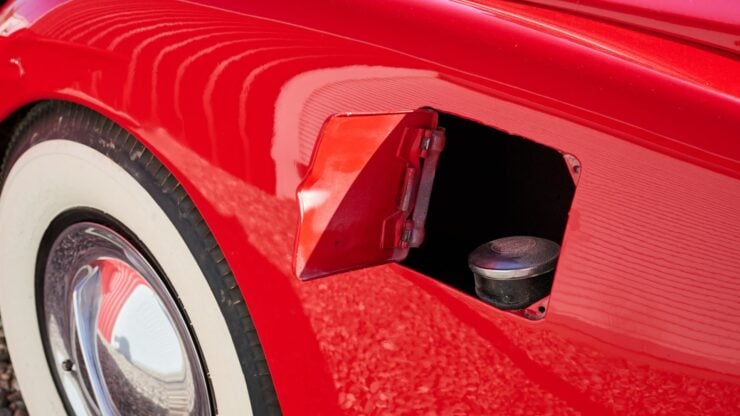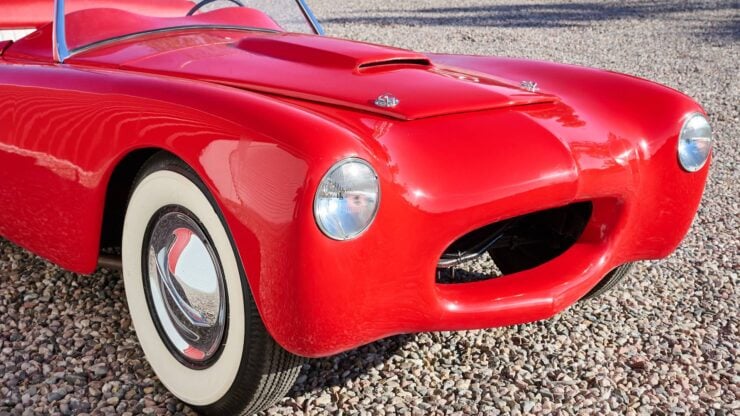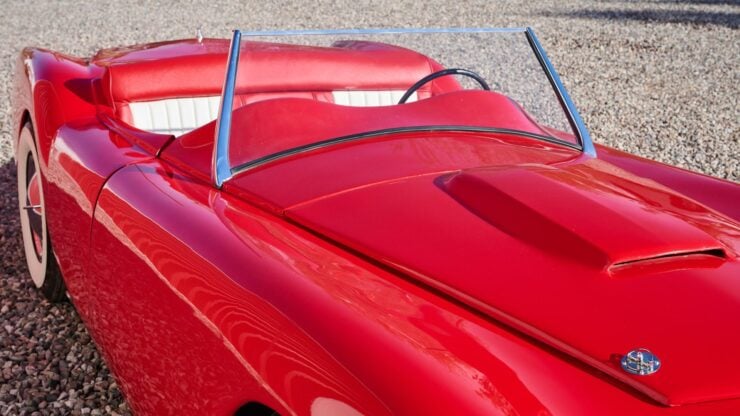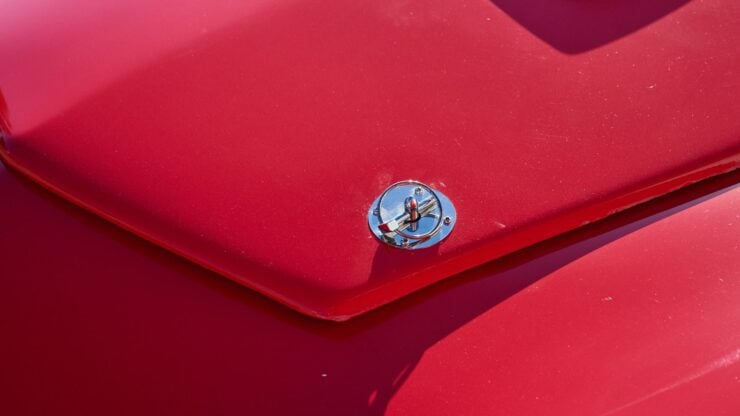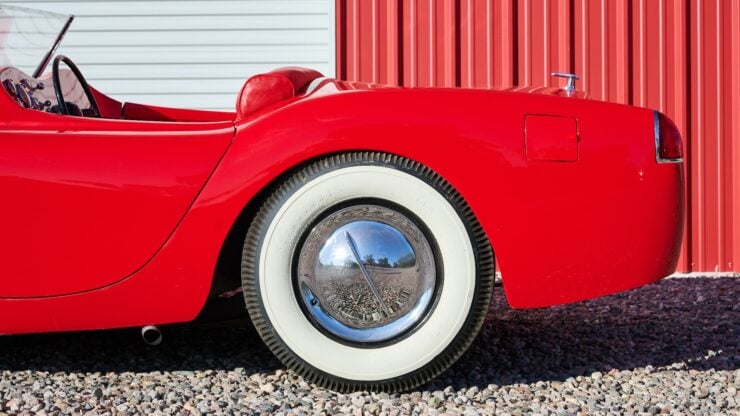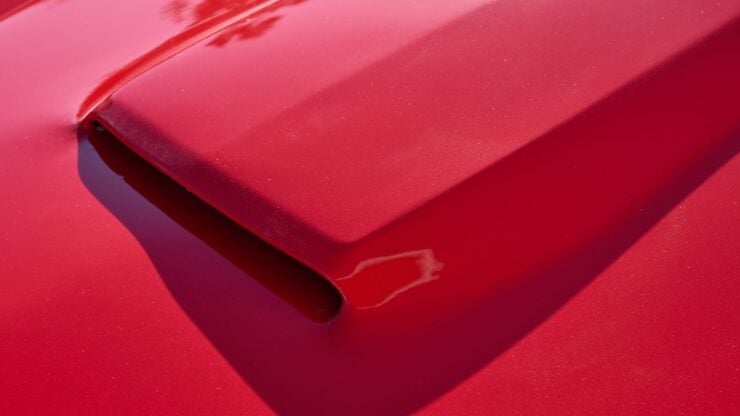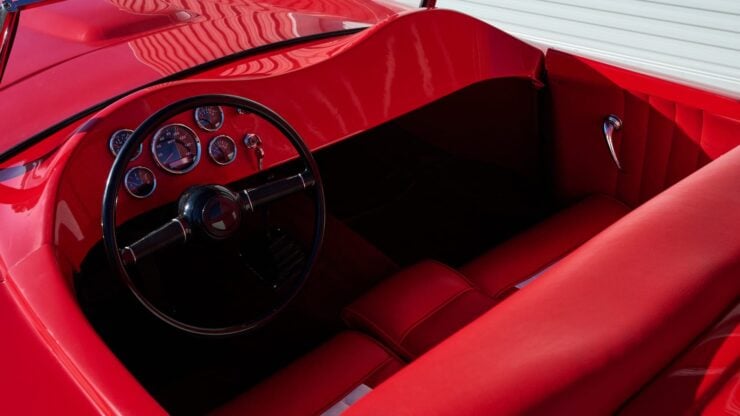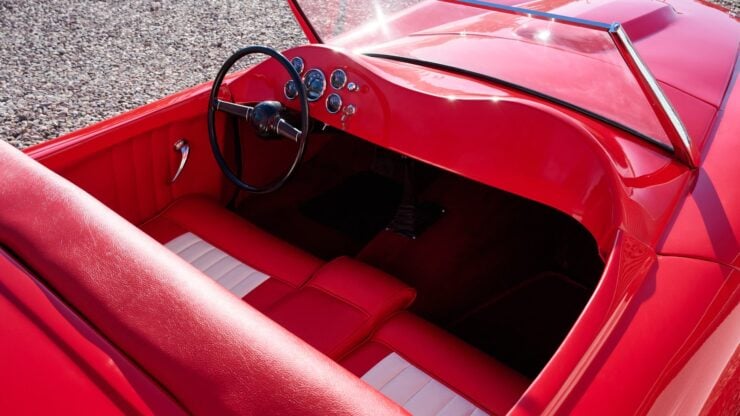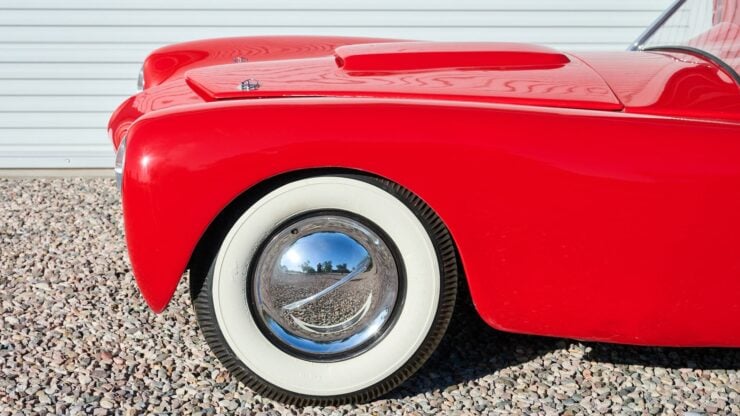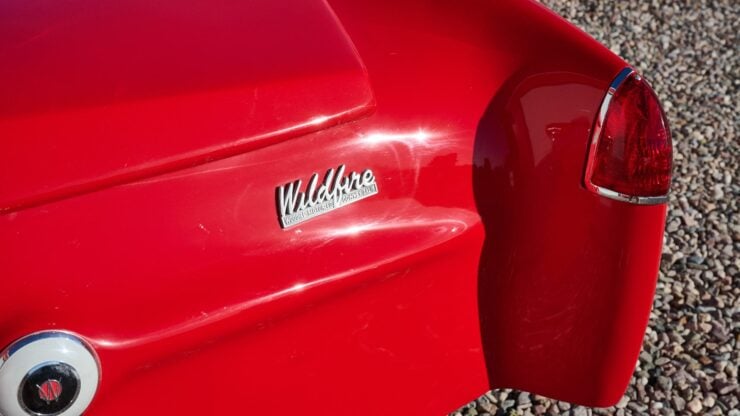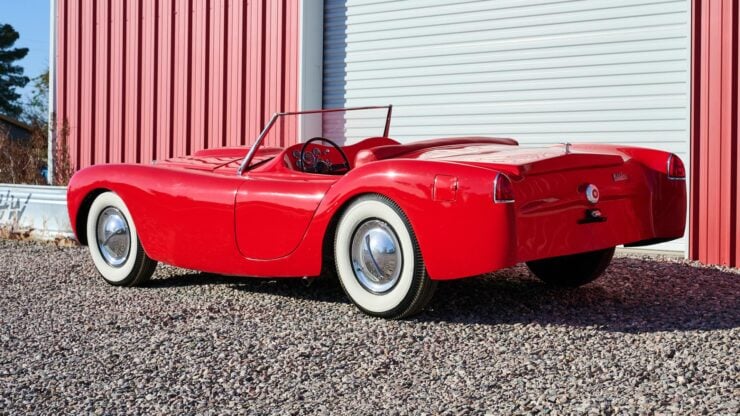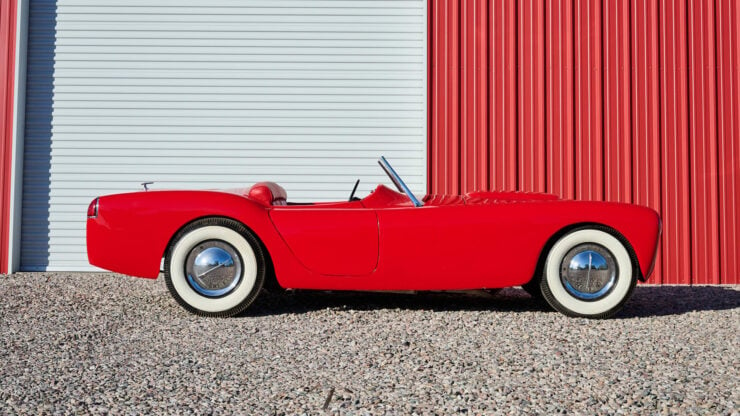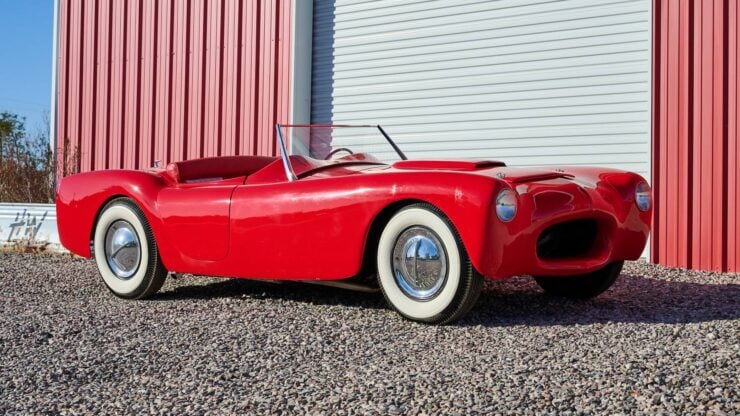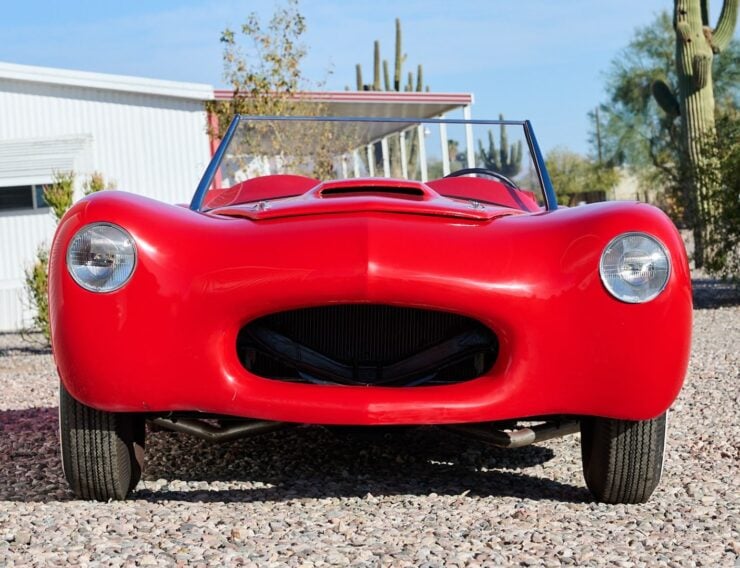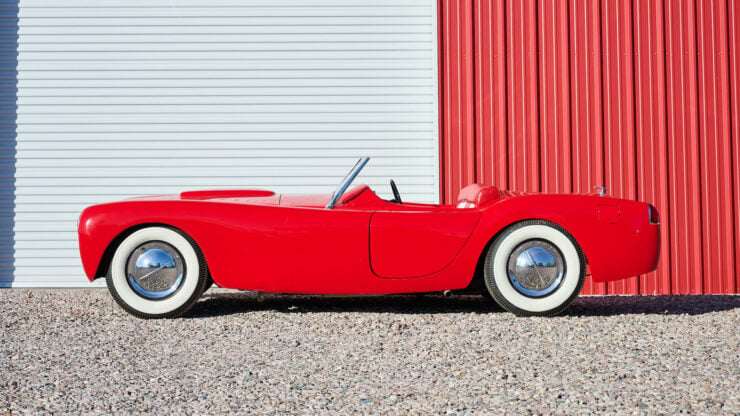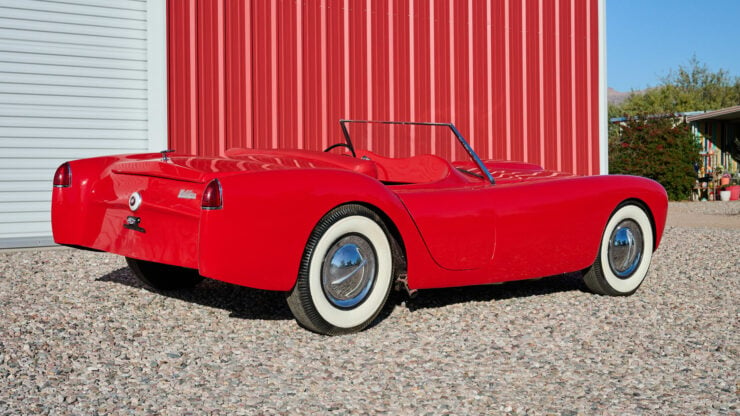This is a 1955 Woodill Wildfire powered by a 390 bhp Cadillac 6.4 liter V8. Given the fact that the car has an estimated curb weight of under 2,000 lbs (907 kgs), it’s safe to say that it’ll be extremely quick by 1950s standards.
The Woodill Wildfire debuted in 1952, it was developed by Dodge and Willys dealer Blanchard Robert “Woody” Woodill using a Glasspar fiberglass body fitted to a Willys chassis. It’s been called the first production car with a fiberglass body, it pre-dated the Corvette by a year, and just 15 or so were built at the workshop.
Fast Facts – A Cadillac V8-Powered Woodill Wildfire
- This 1955 Woodill Wildfire is powered by a 390 bhp Cadillac 6.4 liter V8, offering remarkable performance thanks to its lightweight fiberglass body and estimated curb weight under 2,000 lbs (907 kgs).
- Developed by Dodge (and Willys) dealer Blanchard Robert “Woody” Woodill, the Wildfire debuted in 1952, with a Glasspar fiberglass body on a Willys chassis, predating the Corvette’s fiberglass body by a year.
- Approximately 300 Wildfire kits were produced between 1952 and 1958, offering options for buyers to build their own cars. The model gained significant attention in the 1950s, including coverage in Time magazine.
- This particular Wildfire is equipped with a 1961 Cadillac V8, independent front suspension from a 1948 Ford, and Chevrolet rear-end components. It also has Ferrari Red paint, a red-and-white vinyl interior, and Coker whitewall tires.
The Incredible Story Of The Woodill Wildfire
The story behind the Woodill Wildfire would make for a compelling Netflix series. It involves a plucky entrepreneur with a big idea, a major American automaker, a corporate takeover, a sleek sports car, and eventually, a plan to beat the odds by launching a new low-volume sports car.
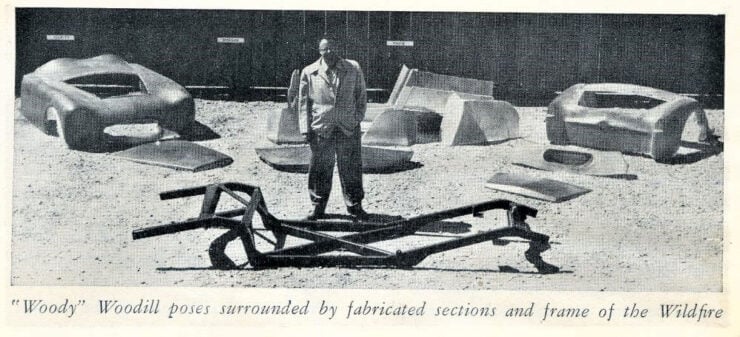

The project to build the Woodill Wildfire started in the early 1950s when successful Willys and Dodge dealership owner Blanchard Robert “Woody” Woodill decided to buy himself a Jaguar XK120 sports car to celebrate the ongoing success of his business. It was one of the fastest road cars in the world at the time, and XK120s were driven by the biggest movie stars of the era including Clark Gable, Gary Cooper, and Humphrey Bogart.
Woodill got talking to one of his mechanics about the car and was quickly talked out of it, with tales of high maintenance costs. Whether true or not, it was enough to change his mind, and he started looking for alternative sports cars.
Meeting Bill Tritt Of Glasspar
Exactly how he found out about Bill Tritt of Glasspar and his state-of-the-art (for the time) fiberglass sports car bodies isn’t known, but we do know the two men got to talking, and Woodill bought two complete bodies. He then set out, along with mechanics from his dealership, to build two cars based on Willys production car chassis, using mostly Willys components.
Thanks to the fact the cars were being built by professionals in a commercial garage, the fit and finish on the two cars was exemplary. Woodill’s plan had been to build two cars and then sell one of them to pay for the other, resulting in what was essentially a free sports car.
The Willys Wildfire (Almost)
He sent his own personal car to the Petersen Motorama, a major California car show, and it was hugely popular. America at this time was starved for homegrown sports cars, and Woodill’s Glasspar-bodied creation was exactly what the people wanted.
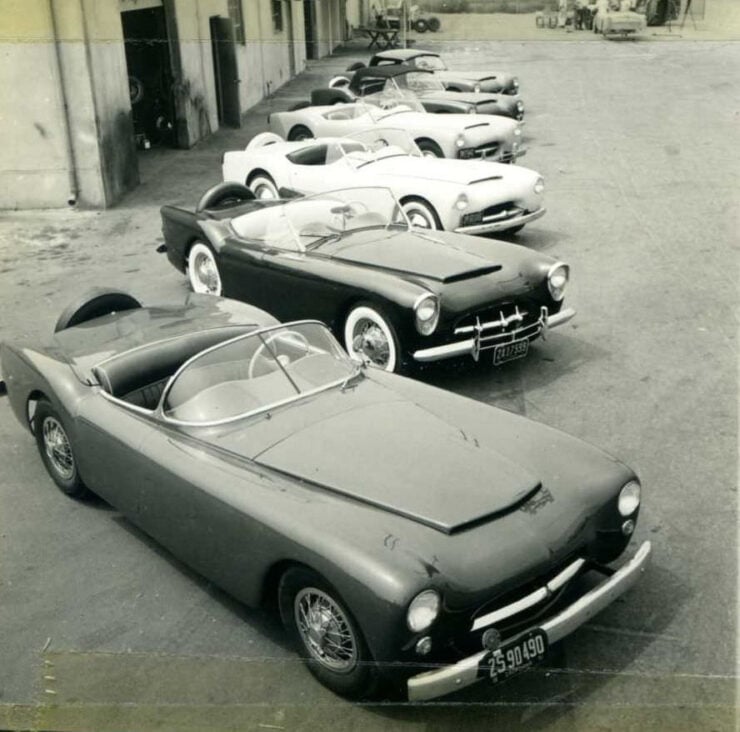


This positive reaction didn’t go unnoticed by Willys-Overland, who paid for the car and for Woodill himself to visit their headquarters so it could be inspected in closer detail. They were impressed, impressed enough to begin talks about building an official production run of “Willys Wildfires.”
It was around this time that Willys-Overland was in talks with Kaiser-Frazer about being acquired, and interestingly enough Kaiser-Frazer had been working on their own fiberglass-bodied sports car, the Kaiser Darrin.
In early 1953 the Woodill was featured in Time magazine, one of the largest magazines in the world at the time. It was a major publicity coup, but perhaps not well timed, as Mr Woodill was quoted as saying that the new car would be available to buy soon from Willys dealers as the Willys Wildfire.
Due to the impending acquisition, and the fact that Kaiser was working on their own fiberglass sports car, this unapproved announcement from Woodill was not welcomed at Willys, and the project was cancelled shortly thereafter.
Kit Car Production Gets Underway
Never one to let this sort of thing get him down, he set about manufacturing the sports car himself. It would be offered in body-only form, as a kit car, or as a complete turnkey sports car ready to drive.
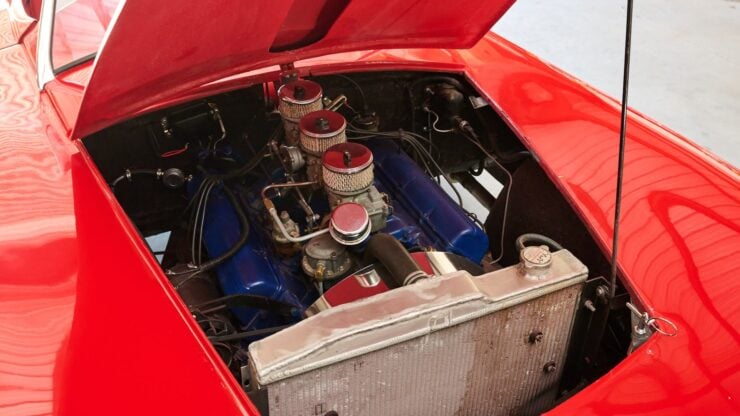


In total, approximately 300 kits would be made from 1952 until 1958 – a high production number for such a small manufacturer.
Relatively few of these original cars remain today, we’ve written about some of them previously on Silodrome, and they were often finished with a variety of chassis and engines depending on who was building them.
The Cadillac V8-Powered Wildfire Shown Here
This is one of the nicest examples of the Woodill Wildfire we’ve come across in recent memory. There’s no mention of what chassis was used, but it’s most likely to be a period Willys frame as this is what was used for most Wildfires.
Power is provided by a 1961 Cadillac 6.4 liter, 390 bhp V8 with triple Rochester carburetors mated to a Hydra-Matic automatic transmission. This is vastly more power than the original 90 bhp Willys inline-six, and given the curb weight of under 2,000 lbs (907 kgs) the car is likely to be a neck stretcher.
The car is fitted with independent suspension sourced from a 1948 Ford, paired with a Chevrolet rear end. It has dual exhausts, rebuilt brakes, wheel cylinders, and a rebuilt master cylinder.
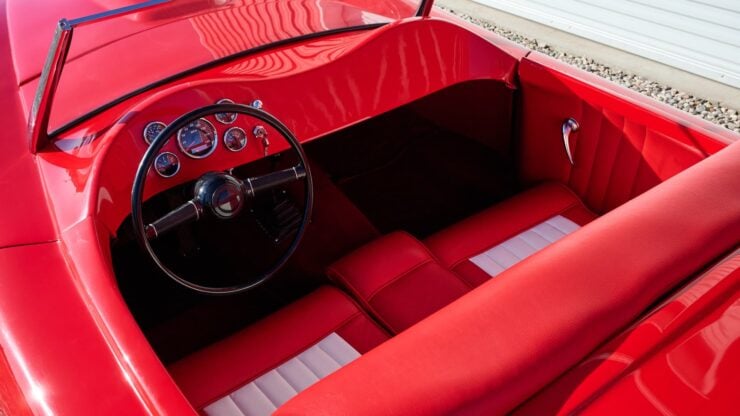


It’s finished with a Ferrari Red exterior over a Red and White vinyl interior with Red carpeting, and it has new Coker Whitewall tires on steel wheels and new dash instruments.
The car is now due to roll across the auction block with Mecum in March and it comes with additional information, magazine articles, and more included. If you’d like to read more about it or register to bid you can visit the listing here.
Images courtesy of Mecum
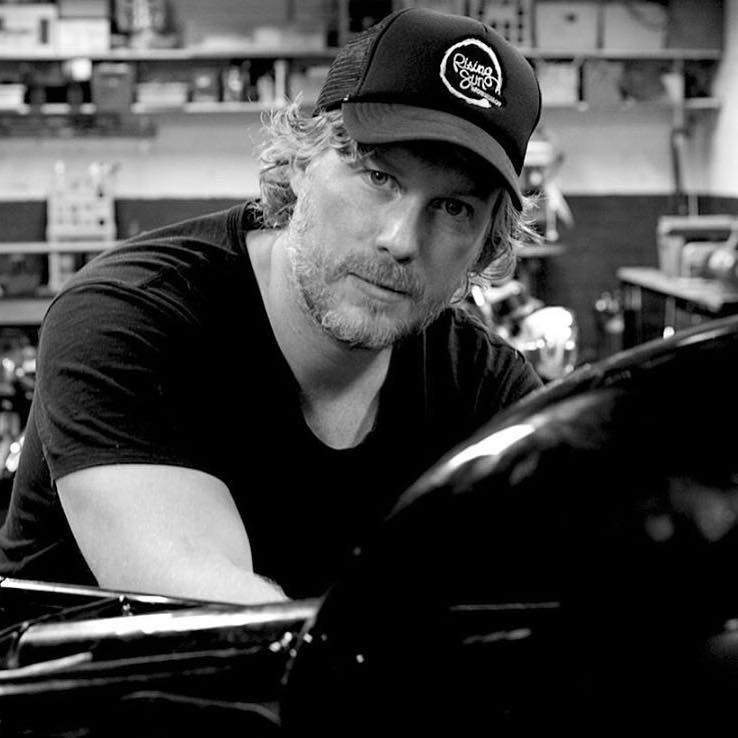

Articles that Ben has written have been covered on CNN, Popular Mechanics, Smithsonian Magazine, Road & Track Magazine, the official Pinterest blog, the official eBay Motors blog, BuzzFeed, Autoweek Magazine, Wired Magazine, Autoblog, Gear Patrol, Jalopnik, The Verge, and many more.
Silodrome was founded by Ben back in 2010, in the years since the site has grown to become a world leader in the alternative and vintage motoring sector, with well over a million monthly readers from around the world and many hundreds of thousands of followers on social media.


